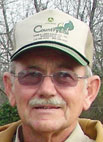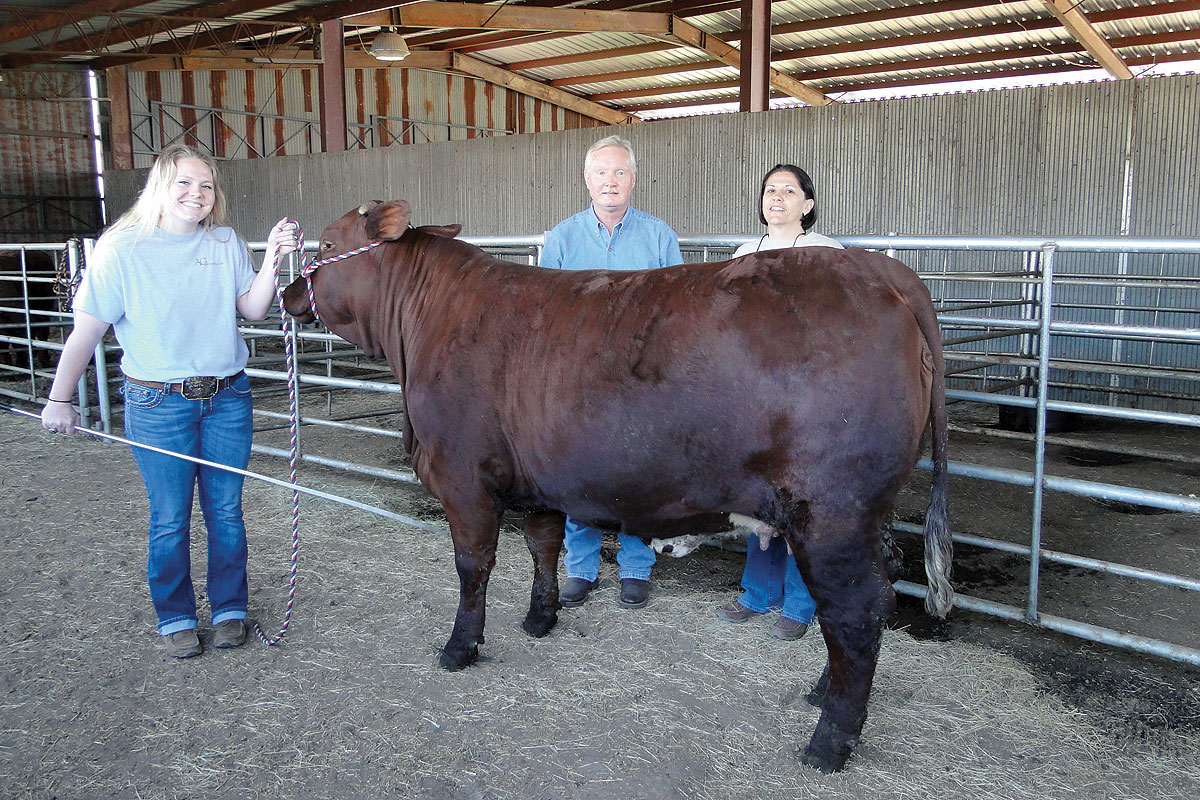
Less than a mile from David and Gayla Holcombe’s home near Jay, Okla. is the schoolhouse where David’s grandparents and mother taught. Following in their footsteps, David earned his degree in Agriculture Education, which he taught for 20 years. Although David no longer teaches vocational agriculture, he has dedicated his farm to “educational demonstration”. They have participated in field days and hosted tour groups to observe conservation practices. He also serves on the Oklahoma Board of Agriculture.
As they work within the National Resources Conservation Service (NRCS) and Oklahoma Conservation Commission (OCC) programs, they constantly look for ways to improve those practices to ensure continued success and the safety of his livestock. “We learn as we implement the programs,” David said.
David and Gayla raise Angus, Gelbvieh and Balancer beef cattle and operate two poultry houses. They also contract out two hog houses that are located on their farm to a local growing company.
The Holcombe’s built their first two houses in 1985 and began raising pullets. They built two more in 1991 that their youngest son and his wife, took over after college. “We have a unique situation. Most people’s houses are 300 feet long. Mine are 400. We put dividers up and I raise roosters on one end. So I have enough pullets for two houses plus about 6,000 roosters for Tyson,” David explained.
David strives to maintain a good environment for the birds inside the house in addition to his conservation practices. “If I’m not happy in there, the birds can’t be happy,” he said.
Due to water quality concerns in the Beaty Creek watershed in the early 1990’s David chose to participate in voluntary programs to address non-point source pollution from farm operations. At the same time the Watershed Advisory Group was formed. “Farmers weren’t accustomed to rules and regulations,” said David. “So we printed ‘Voluntary’ in big letters. After the first year the water quality analyses showed a reduction of phosphorus.” He also said that it showed how successful a program could be “when farmers are allowed to implement (the programs) they wanted, when they wanted.”
Holcombe Farms first farm conservation plan was developed by NRCS in 1990. They later developed a waste management plan. By only applying as much litter and commercial fertilizer that is needed they are able to reduce costs.
By converting cropland to grasses for pasture and haying, the Holcombe’s were able to reduce soil erosion and runoff. The Holcombe’s are looking at adding new equipment that will coat the underside of the weed leaves but not harm the clovers. He says that even though it is an expensive piece of equipment he feels that his pastures will be better off in the long run by getting rid of the weeds while sparing the clover.
To reduce runoff and erosion in high use areas they installed geotextile fabric covered with 6 inches of SB#2 aggregate rock to minimize mud in corrals, weaning pens and working areas. He added that he was surprised at the difference he noticed in herd health after that. “It virtually eliminates mud in those areas. We see less foot infections and reduced pink eye in the weaning areas.”







